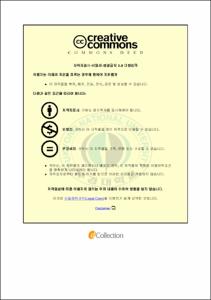참치안구유 및 잔가시 모자반 추출물의 항염증 효과
- Abstract
- Inflammation is protective physiological response of the body to activate the immune system in response to a variety of stimuli, including infections and tissue injury. However, chronic inflammatory response may induce various diseases such as sepsis, rheumatoid arthritis, and cancer. Macrophage plays critical roles in immune reaction, allergy, and inflammation. These cells induce inflammatory reation, and initiate and maintain specific immune responses by releasing different types of cytokines. Macrophage activation by lipopolysaccharides (LPS), which are derived from gram-negative bacteria cell walls, results in the release of several inflammatory mediators including nitric oxide (NO), cyclooxygenase (COX)-2, Interleukin (IL)-6, IL-1β, and tumor necrosis factor (TNF)-α. Over-expression of the inflammatory mediators in macrophage in involved in many inflammation related diseases, such as sepsis, rheumatoid arthritis, and cancer. Currently, most broadly used medicines for treating inflammation-related diseases are non-steroidal anti-inflammatory drugs (NSAIDs). However, the long-term administration of NSAIDs with a potent activity can result in various and severe adverse effects. Therefore, a strong interest in developing new anti-inflammatory drugs from various natural products has been growing. It may inhibit or prevent a variety of inflammatory diseases by suppressing the secretion of these inflammatory mediators in activated macrophages. Therefore, plant-derived natural compounds have been targeted for the treatment of various inflammatory diseases due to high effectiveness and very few side effects. Therefore, the anti-inflammatory effects of Sargassum micracanthum ethanol extracts(SMEE), Sargassum micracanthum water extracts(SMWE), and Tuna eyeball oil (TEO) were investigated using LPS-induced inflammatory response in this study. The murine macrophage cell line RAW 264.7 cells were used and MTT assay was performed to measure the cell proliferation ability. The nitric oxide(NO), TNF-α, IL-6 and IL-1β secretion were measured in LPS-induced RAW 264.7 cells by ELISA. The expression of iNOS, COX-2 and NF-κB p65 protein were studied by immunoblotting. The Balb/c mice were used for an in vivo acute toxicity test, and ICR mice were purchased to evaluate croton oil-induced ear edema. As a results, there were no cytotoxicity in the macrophage proliferation treated with SFEE and SSEE compared to the control. NO levels decreased with increasing concentration of SFEE and SSEE and was inhibited up to 50%. Moreover, the secretion of IL-6, TNF-α, and IL-1β were suppressed in a dose-dependent manner, especially, IL-6 and IL-1β inhibition activities were over 50% at 0.1 μg/mL. The rated of formation of edema in the mouse ear was reduced at the highest dose tested compared to that in the control. Moreover, in acute toxicity test, no moralities occurred in mice adiministered 5000 mg/kg body weight of SMEE, SMWE and TEO over 2 weeks observation period.
These results suggested that SMEE, SMWE, and TEO may have significant effects on inflammatory factors and be a potential anti-inflammatory therapeutic materials.
- Issued Date
- 2013
- Awarded Date
- 2013. 8
- Type
- Dissertation
- Publisher
- 부경대학교
- Affiliation
- 대학원
- Department
- 대학원 식품공학과
- Advisor
- 안동현
- Table Of Contents
- 목 차
Abstract ····················································································· 1
서 론 ························································································· 4
재료 및 방법
1. 실험재료 ················································································· 9
1-1. 원료
1-2. 동물
1-3. 시약
2. 추출물 제조 ··········································································· 10
3. 방 법
3-1. 세포배양 ·········································································· 11
3-2. 세포 독성 측정 ································································· 11
3-3. Nitric Oxides 분비량 측정 ··············································· 12
3-4. 염증 관련 cytokines 분비량 측정 ····································· 12
3-5. iNOS 및 COX-2 발현량 측정 ··········································· 13
3-6. 귀 부종 측정 및 조직 관찰 ··············································· 14
3-7. 단기 독성 평가 ································································· 14
4. 통계처리 ··············································································· 15
결과 및 고찰
1. 참치안구유의 염증 억제 효과
1-1. 세포 독성 측정 ······················································· 16
1-2. Nitric oxides 생성 억제 효과 ··········································· 18
1-3. 염증관련 cytokines 생성 억제 효과 ···································· 20
1-4. iNOS 및 COX-2 발현 억제 효과 ··························· 25
1-5. 귀 부종 억제 효과 및 조직 관찰 ··································· 29
1-6. 단기 독성 평가 ······························································ 32
2. 잔가시 모자반 추출물의 염증 억제 효과
2-1. 세포 독성 측정 ································································· 34
2-2. Nitric oxides 생성 억제 효과 ········································ 36
2-3. 염증관련 cytokines 생성 억제 효과 ····································· 39
2-4. iNOS 및 COX-2 발현 억제 효과 ··························· 45
2-5. 귀 부종 억제 효과 및 조직 관찰 ······································ 51
2-6. 단기 독성 평가 ······························································ 55
요 약 ·················································································· 58
참 고 문 헌 ·········································································· 61
- Degree
- Master
- Files in This Item:
-
-
Download
 참치안구유 및 잔가시 모자반 추출물의 항염증 효과.pdf
기타 데이터 / 1.86 MB / Adobe PDF
참치안구유 및 잔가시 모자반 추출물의 항염증 효과.pdf
기타 데이터 / 1.86 MB / Adobe PDF
-
Items in Repository are protected by copyright, with all rights reserved, unless otherwise indicated.